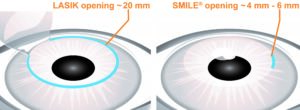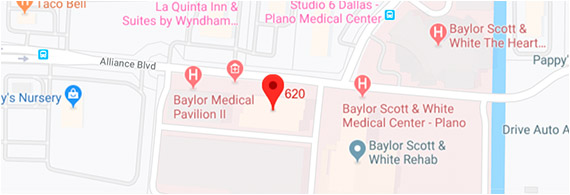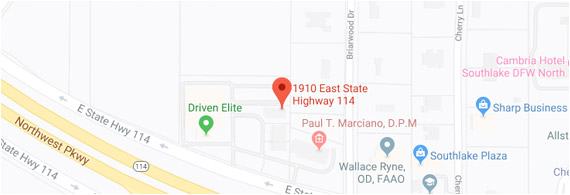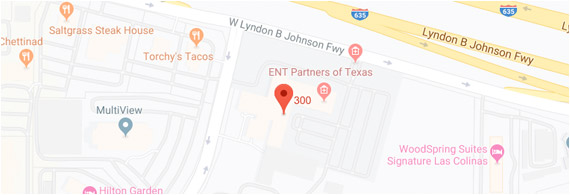Zeiss SMILE vs LASIK
Thanks to innovations in laser-guided surgeries, millions of people around the globe can have clear vision without contact lenses or eyeglasses. Laser-assisted in Situ Keratomileusis, or simply LASIK, is the most popular of these surgeries, correcting most refractive errors to 20/40 clarity or better.
Although LASIK works for many people, it’s not an ideal solution for some. Therefore, experts have come up with more forms of laser surgeries like the Small Incision Lenticule Extraction (Zeiss SMILE) to give people more options.
If you’re considering laser eye surgery to correct your refractive error, it’s best that you familiarize yourself with both Zeiss SMILE and LASIK procedures so you can decide which one among the two options is best for you.
Laser Surgeries for Refractive Errors: Zeiss SMILE Eye Surgery vs. LASIK
LASIK Basics: The LASIK procedure is a laser-guided surgery, whereby a refractive surgeon uses either a specialized femtosecond laser to make a small flap in the cornea, referred to as a LASIK flap.
After that, the surgeon lifts the corneal flap and uses an excimer laser to laser the cornea tissue, so it can reform and refract light properly to the retina, at the back of the eye.
The LASIK procedure can correct all types of refractive errors, which include far-sightedness, near-sightedness, presbyopia, and astigmatism. The procedure takes 10-15 minutes per eye, and local anesthesia is usually administered.
Zeiss SMILE (Small Incision Lenticule Extraction) Basics: This is a newer type of laser-guided surgery that specifically treats myopia or near-sightedness. Compared to LASIK, smile laser eye surgery is less invasive as it doesn’t require making a flap in the cornea to reshape it.
The Zeiss SMILE surgery, sometimes called SMILE LASIK, is similar to LASIK in the sense that a laser is used to reshape the cornea. During the procedure, a surgeon uses the Visumax femtosecond laser to make a small, lens-shaped bit of tissue within the cornea.
With the same laser, the eye surgeon makes a small arc-shaped opening in the surface of the cornea from where he/she removes the tissue and discards it. So, unlike LASIK surgery that requires the use of two devices, the Zeiss SMILE requires the use of the femtosecond laser only.
Like the LASIK procedure, the Zeiss SMILE procedure takes 10-15 minutes to complete. It is an ideal treatment option for most people with myopia.
Zeiss SMILE and LASIK: Three Major Differences You Must Know
After understanding the basics of refractive surgery, it’s easy to see the differences between the Zeiss SMILE procedure and the LASIK procedure. The three main differences between the two procedures are:
The Zeiss SMILE procedure is less invasive than the LASIK procedure. This is because Zeiss SMILE does not involve the creation of a corneal flap. It is ideal for active individuals or those working in environments that have the possibility of contact.
The Zeiss SMILE procedure is a treatment option for myopia and myopic astigmatism, while the LASIK treatment can be used to correct all refractive errors including myopia, hyperopia, and astigmatism.
The Zeiss SMILE procedure only requires the use of one device, i.e., the femtosecond laser, while the LASIK procedure requires the use of two devices, i.e., the femtosecond laser and the excimer laser.
The Zeiss SMILE procedure may treat larger refractive errors better.
The Zeiss SMILE procedure has a shorter recovery time.
Corneal Strength and Biomechanics: Zeiss SMILE vs. LASIK
A lot has been said and written about the corneal strength after laser-guided surgery. One study shows that the removal of corneal tissue by either procedure inescapably results in reduced corneal tensile strength.
While both procedures significantly alter corneal biomechanical properties, most studies show that corneas treated with Zeiss SMILE are biomechanically stronger than those treated with LASIK.
One study revealed that Zeiss SMILE might save more corneal biomechanical properties than LASIK. The study also showed that smile laser eye surgery might protect and leave more stromal tensile strength compared to LASIK.
During the LASIK eye surgery, the vertical side cuts through corneal lamellae, rather than horizontal delamination incisions contribute to the loss of structural integrity during flap creation.
In Zeiss SMILE, the anterior stroma remains uncut, and the corneal tissue is taken out from the deeper stroma layers than in LASIK. That’s why the Zeiss SMILE procedure results in stronger corneas as considerably less anterior cornea is subjected to transverse separation and does involve as many corneal nerves.
Dry Eye and Laser Vision Correction: LASIK vs. Zeiss SMILE
When recovering from laser surgery, your eyes need more tears to stay healthy and heal after surgery. Unfortunately, laser procedures can enhance dry eye symptoms.
Most studies show that LASIK comes with more dry eye complications compared to Zeiss SMILE. In one study, researchers found out that there were more patients complaining about dry eye after undergoing the LASIK procedure compared to those who had the same problem after undergoing the Zeiss SMILE procedure.
In another study, researchers found out that only 20% of Zeiss SMILE patients used eye drops six months after surgery, while 43% of LASIK patients needed artificial tears to reduce eye dryness.
The Zeiss SMILE procedure has fewer dry eye complaints because it is minimally invasive compared to the LASIK procedure. The lesser degree of damage to the cornea and cornea nerves often results in fewer complications and reduced dry eye symptoms.
Recovery Time: LASIK vs. Zeiss SMILE
Healing and recovery time in LASIK and Zeiss SMILE is about the same. Patients can resume most normal activities soon after either surgery. However, complete healing of the eyes after both LASIK and Zeiss SMILE procedures takes two to three months.
Since the Zeiss SMILE procedure is flapless and minimally invasive, the risk of scarring is also lesser. Since the cornea‘s surface is minimally disturbed, there should not be problems with the flap that can occur with LASIK.
Zeiss SMILE vs. LASIK: Limitations of Zeiss SMILE Eye Surgery
Like any surgery, the Zeiss SMILE procedure carries the risk of complications. The following are some common limitations of Zeiss SMILE eye surgery:
- Halos and glare around lights, especially at night
- Inflammation within the treated area
- Infection
- Retreatment, which must be done with surface PRK.
Another limitation of Zeiss SMILE eye surgery is that your vision may end up being overcorrected or under-corrected. Some of the rare problems may include blindness and having worse vision than before the operation.
Luckily, these complications can be improved with contact lenses, eyeglasses, or additional laser surgery. Before the Zeiss SMILE eye surgery, your ophthalmologist can help you weigh both the risks and rewards of the procedure so you can decide whether it’s the best option for you.
Zeiss SMILE vs. LASIK: Advantages of Zeiss SMILE Eye Surgery
Patients who undergo Zeiss SMILE eye surgery enjoy more benefits than those who undergo the LASIK procedure. Some of the benefits that the Zeiss SMILE procedure has over the LASIK procedure include:
- The procedure is quick and painless as it only involves one device (femtosecond laser) and does not involve creating a flap.
- Since it is minimally invasive, the Zeiss SMILE procedure has fewer dry eye complaints compared to the LASIK procedure.
- The flapless procedure is less painful and eradicates problems with the flap, such as flap dislocation.
- The Zeiss SMILE procedure performs better than LASIK in terms of cornea strength and stability.
Conclusion: Zeiss SMILE vs. LASIK: Which Should You Get?
Studies indicate that both treatment options, outcomes are comparable, with visual acuity improvements for both procedures noted the day following the surgery. However, one study shows that Zeiss SMILE patients report slightly higher satisfaction with their procedure compared to those who choose LASIK.
Considering the benefits that are associated with the Zeiss SMILE procedure, it’s apparent that the Zeiss SMILE procedure is a much better option for you if you have myopia. But if you need to correct short-sightedness, farsightedness or astigmatism, the LASIK procedure might be your only best option.
Schedule a Zeiss SMILE Consultation Today!
Are you considering Zeiss SMILE eye surgery to get rid of myopia? You should seriously consider undergoing refractive surgery at LaserCare Eye Center. We strive to be the leading refractive and cataract surgeon in Dallas. We also offer various payment options for the various laser vision correction procedures that we perform.
Call us at 214-574-9600 or 844-900-3937 to schedule your free consult to see if you’re a candidate for Zeiss SMILE eye surgery.
https://journals.healio.com/doi/abs/10.3928/1081597X-20140903-09
https://link.springer.com/article/10.1186/1745-6215-13-75
Related Links
Schedule a free consultation





